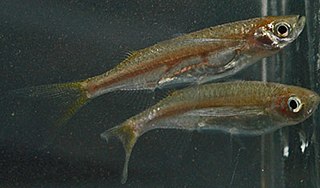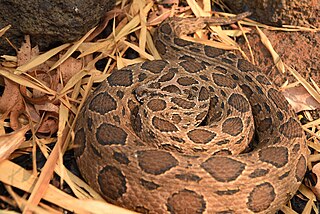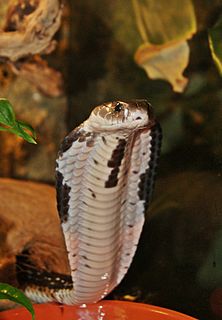
The Chao Phraya is the major river in Thailand, with its low alluvial plain forming the centre of the country. It flows through Bangkok and then into the Gulf of Thailand.

The crocodylian family Crocodylidae includes the true crocodiles, which are the members of the subfamily Crocodylinae, as well as potentially the false gharial, the only extant member of the subfamily Tomistominae. The latter is a subject of controversy as to whether it is a crocodile or actually belongs in the family Gavialidae. Further genetic analysis has to be done to come to a final conclusion.

The surilis are a group of Old World monkeys and make up the entirety of the genus Presbytis. They live in the Thai-Malay Peninsula, on Sumatra, Borneo, Java and smaller nearby islands.

Mammea is a flowering plant genus with about 70 species in the family Calophyllaceae. Its members are evergreen trees having edible fruits. The flowers are polygamous, with a unitary calyx opening into two or three valvate sepals. There are 4 to 8 petals. Berries are formed, containing 1 to 4 seeds. The leaves are rigid, coriaceous and often have pellucid dots.

The Siamese crocodile is a small to medium-sized freshwater crocodile native to Indonesia, Brunei, East Malaysia, Laos, Cambodia, Myanmar, Thailand and Vietnam. The species is critically endangered and already extirpated from many regions. Its other common names include Siamese freshwater crocodile, Singapore small-grain, and soft-belly.

Parachela is a genus of cyprinid fishes. There are currently seven species in this genus which are found in Southeast Asia.

Daboia siamensis is a venomous viper species that is endemic to parts of Southeast Asia, southern China and Taiwan. It was formerly considered to be a subspecies of Daboia russelii, but was elevated to species status in 2007.
Macrognathus is a genus of eel-like fish of the family Mastacembelidae of the order Synbranchiformes.
Sindora siamensis is a species of leguminous tree in the subamily Detarioideae. Like several other species in the genus Sindora, its wood is considered valuable; the 'least concern' conservation status may reflect efforts to replant this species, but mortality rates are high.
Shorea siamensis is a species of plant in the Dipterocarpaceae family. The tree is growing in most of Southeast Asia and is found in Myanmar, Malaysia, Thailand, Cambodia, Vietnam and Indonesia.

The Indochinese spitting cobra also called the Thai spitting cobra, Siamese spitting cobra or black-and-white spitting cobra, is a species of spitting cobra found in Southeast Asia.

Bithynia siamensis is a species of a freshwater snail with a gill and an operculum, an aquatic prosobranch gastropod mollusk in the family Bithyniidae.
Trechiamiotes siamensis is a species of beetle in the family Carabidae, the only species in the genus Trechiamiotes.

The Thai horseshoe bat, sometimes called the Thai leaf-nosed bat, is a species of bat from the family Rhinolophidae. It is frequently listed as a subspecies of the Big-eared horseshoe bat, but this may be a result of the two species being taken in sympatry in Laos. It is native to China, Laos, Thailand, and Vietnam.

Laubuka is a genus of cyprinid fish found in South and Southeast Asia.
Daboia is a genus of venomous vipers.
Streptomyces siamensis is a bacterium species from the genus of Streptomyces which has been isolated from soil from Thailand.











